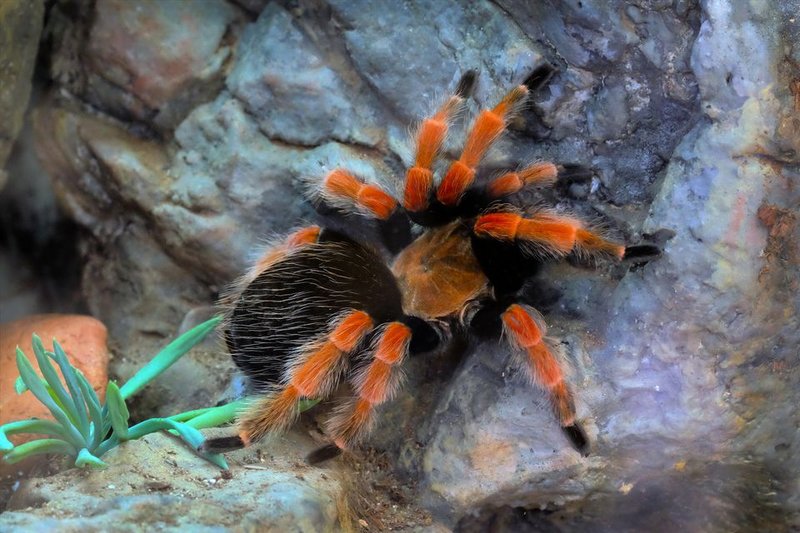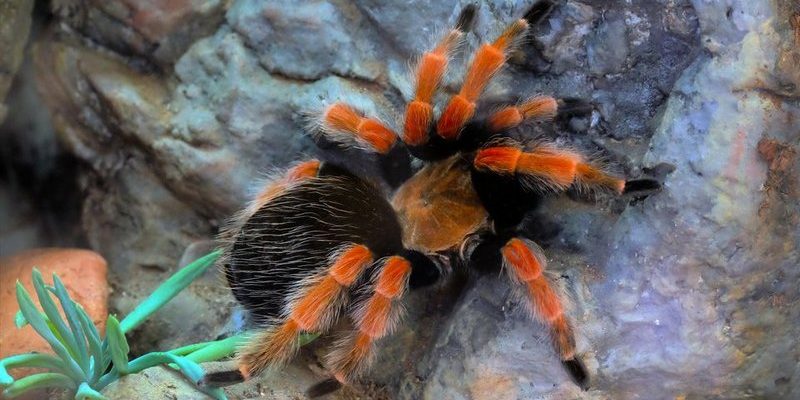
Just like how every dog breed has its traits, tarantulas come in various species, each with unique characteristics. The Mexican Redknee isn’t just another hairy spider; it has particular habits, habitats, and temperaments. So, let’s dive into the world of tarantulas and discover what makes the Mexican Redknee special compared to its relatives.
Overview of Tarantula Species
Before we zoom in on the Mexican Redknee, it’s important to understand that tarantulas are a family of spiders with over 900 species—yes, you read that right! They vary widely in size, color, and behavior. Some tarantulas are known for being docile, while others can be quite defensive.
Generally, tarantulas can be divided into two categories: terrestrial and arboreal. Terrestrial tarantulas prefer to live on the ground, while arboreal species like to climb and dwell in trees. The Mexican Redknee is a terrestrial tarantula, which means it prefers to burrow and stay close to the earth.
Physical Characteristics of the Mexican Redknee Tarantula
The Mexican Redknee is known for its striking appearance. With a leg span that can reach up to 5-6 inches, it’s pretty noticeable. Its body is usually a dark brown or black, accentuated by bright orange or red markings on its knees—hence the name! This contrast not only makes them visually appealing but also plays a role in their survival.
These markings are a typical form of aposematism, a fancy term for warning coloration. It signals to potential predators that the tarantula might be venomous or unpleasant to eat, even though their bites are not particularly harmful to humans. You might be wondering why this matters; well, it helps the Mexican Redknee stay safe in its natural habitat.
Behavior and Temperament
One of the reasons people are drawn to the Mexican Redknee Tarantula is its generally calm demeanor. Many tarantulas can be skittish or aggressive, but the Mexican Redknee is often described as more tolerant of handling. This doesn’t mean it’s a cuddly pet—remember, it’s still a spider!
If you’re considering getting one, you’ll want to know that they can be quite secretive. They’ll often hide in their burrows, coming out mostly to hunt or explore. This behavior is typical for terrestrial tarantulas. So, if you’re expecting a pet that’s always out in the open, you might need to adjust your expectations a little!
Habitat and Geographic Range
The Mexican Redknee Tarantula primarily resides in the dry forests and scrublands of Mexico. These environments provide the right mix of temperature and humidity for their survival. Unlike some other tarantula species that thrive in tropical areas, the Mexican Redknee has adapted to a more arid climate.
In contrast, other tarantula species, such as the Brachypelma boehmi, are found in different habitats throughout Central America. Understanding their specific habitat preferences helps in creating the right environment for them if you decide to keep one as a pet. A good rule of thumb when caring for any tarantula is to mimic its natural habitat as closely as possible.
Dietary Preferences
Like all tarantulas, the Mexican Redknee is a carnivorous predator. Its diet mainly consists of insects, but they can also enjoy small rodents or lizards on occasion. If you’re keeping one, you’ll want to feed it appropriately sized crickets, mealworms, or even roaches.
Here’s a quick checklist for their diet:
- Live insects like crickets or mealworms.
- Occasional treats like small pinkie mice.
- Ensure the food is appropriately sized—nothing larger than their body!
Feeding your tarantula is not just about keeping it alive; it’s also about maintaining a healthy diet. A balanced diet contributes to their overall well-being and can extend their lifespan. The Mexican Redknee can live up to 20 years in captivity with proper care!
Comparison with Other Popular Tarantulas
When you line up the Mexican Redknee against other popular tarantulas, you’ll see some differences and similarities that stand out. For example, consider the Chilean Rose Tarantula. This species is known for being exceptionally docile but is often more skittish than the Redknee. On the other hand, the Goliath Birdeater, which can be massive, is more aggressive and needs more experience to handle properly.
Here’s a quick comparison:
| Species | Size | Temperament | Habitat |
| Mexican Redknee | 5-6 inches | Calm, docile | Dry forests of Mexico |
| Chilean Rose | 4-5 inches | Docile but skittish | Grasslands of Chile |
| Goliath Birdeater | 10-12 inches | Aggressive, needs experienced handling | Tropical rainforests of South America |
This comparison highlights how the Mexican Redknee stands out as a good option for beginners. While it’s not the biggest spider, its friendly temperament and stunning colors make it a popular choice.
So, what’s the takeaway when it comes to the Mexican Redknee Tarantula? It’s got a lot going for it—beautiful looks, a manageable size, and a generally calmer personality compared to many other species. If you’re fascinated by spiders and considering diving into the world of tarantulas, this might just be the perfect entry point.
Understanding the differences between the Mexican Redknee and other tarantulas can help you appreciate its unique charm and make informed decisions if you choose to keep one. Whether you’re a curious beginner or a seasoned enthusiast, the Mexican Redknee is a noteworthy character in the fascinating realm of tarantulas!

